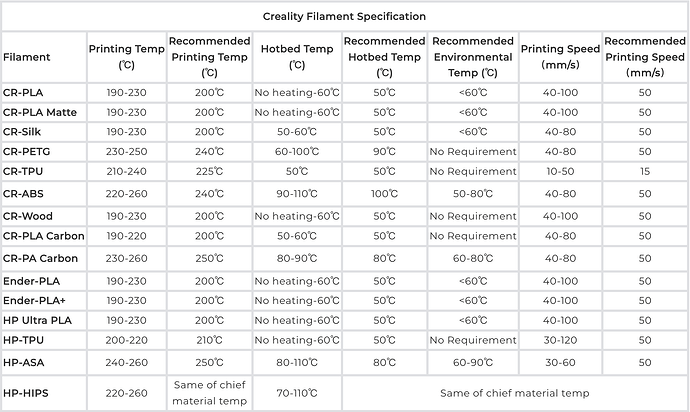There are over 100 types of 3D printing filaments utilized across various industries, including aerospace and defense, medical and dental, automotive, consumer goods, education, and more. Today, we’ll delve into what 3D printing filaments are and explore different 3d printer filament types. Additionally, we’ll discuss how to set the Creality 3D printer filaments on Bowden Extruder and Direct Extruder to enhance your printing efficiency. For deeper insights into future market trends for 3D printing filaments, be sure to consult the market trends report.
What is Filament in 3D Printing
3D printer filament is the material used in 3D printing to create physical objects layer by layer. It is a thermoplastic material that comes in spools and is fed into a 3D printer, which then heats and extrudes the filament to build up the layers of the printed object. The choice of filament material can significantly impact the properties of the final printed object, including its strength, flexibility, durability, and appearance.
What Type of Filaments Are Used to 3D Print
Common Filaments
1. PLA (Polylactic Acid): PLA is a popular choice for 3D printing due to its ease of use and environmental friendliness. Derived from renewable resources like corn starch, it is biodegradable. PLA is known for its vibrant color options and low printing temperatures, making it suitable for hobbyists. While it may lack the strength of some other filaments, PLA is ideal for prototyping, decorative items, and educational purposes.
2. ABS (Acrylonitrile Butadiene Styrene): ABS is a robust thermoplastic with excellent impact resistance. It is commonly used for functional prototypes, automotive components, and consumer goods. ABS requires higher printing temperatures and is known for its durability and resistance to heat and chemicals.
3. PETG (Polyethylene Terephthalate Glycol): PETG combines the best features of PLA and ABS, offering strength, durability, and transparency. It is suitable for a wide range of applications, including mechanical parts, medical devices, and transparent prints. PETG is known for its ease of use and minimal warping during printing.
4. TPU (Thermoplastic Polyurethane): TPU is a flexible filament with rubber-like properties. It is commonly used for printing flexible parts such as phone cases, shoe insoles, and seals. TPU is resistant to abrasion and can withstand repetitive flexing, making it suitable for applications that require elasticity.
Special Filaments:
1. Woodfill: Woodfill filament contains a percentage of wood fibers, giving the printed objects a wood-like appearance and texture. It is often used for artistic projects, decorative items, and prototypes where a natural aesthetic is desired.
2. Metal-Infused Filaments: Metal-infused filaments contain fine metal particles, providing prints with a metallic finish. Common metals include bronze, copper, and aluminum. These filaments are used for creating sculptures, jewellery, and functional parts where a metallic appearance is desired without the need for traditional metalworking.
3. Flexible Filaments: Flexible filaments, such as TPU, offer elasticity and bendability. They are used for printing items like phone cases, medical models, and flexible components. Flexible filaments are valued for their ability to conform to shapes and withstand repeated bending without breaking.
Creality 3D Printers Filaments Parameter Setting
Update the latest universal Creality filament specification
Tips:
- CR-PLA, CR-PLA Matte, CR-Silk, CR-PETG, CR-Wood, CR-PLA Carbon, Ender-PLA, Ender-PLA+, HP Ultra PLA, work with 99% FDM Printers;
- CR-TPU, HP-TPU, Printers should work with direct driver extruder;
- CR-ABS, CR-PA Carbon, HP-ASA, HP-HIPS, for fully enclosed printers, otherwise, en enclosure will be needed.
More interest:
Best 3D Printing Temperatures for PLA, ABS, Nylon & More
Ideal PLA Bed and Nozzle Temperature Guidelines
3D Printing Carbon Fiber: Exploring the Potential of Carbon Fiber in 3D Printing
Creality Filaments’ Parameter Reference for Direct Extruder
Tips: The parameters above are main parameters from the slicing software and other parameters can be set according to the default software. The parameter settings are only used for Creality’s filaments.

